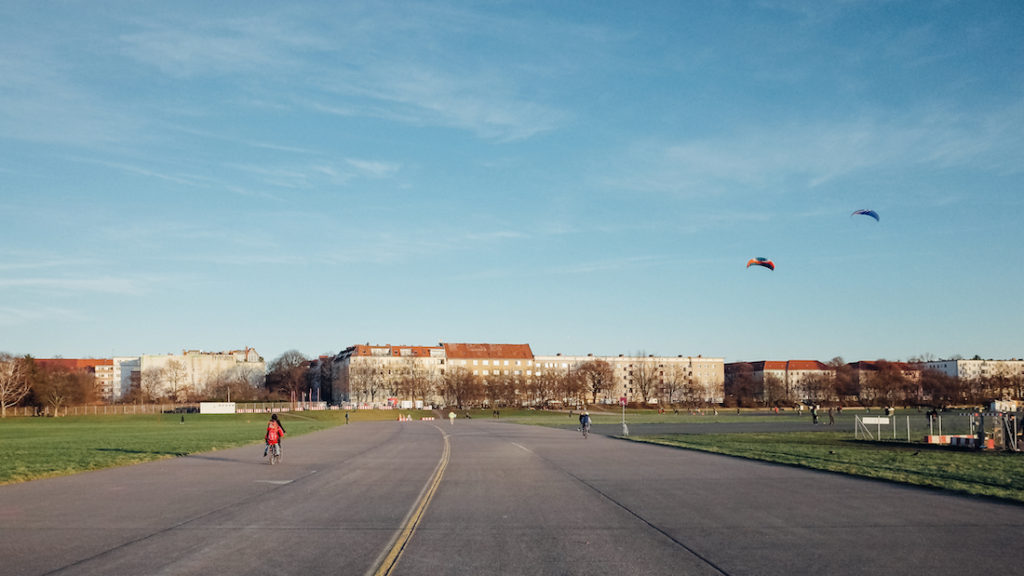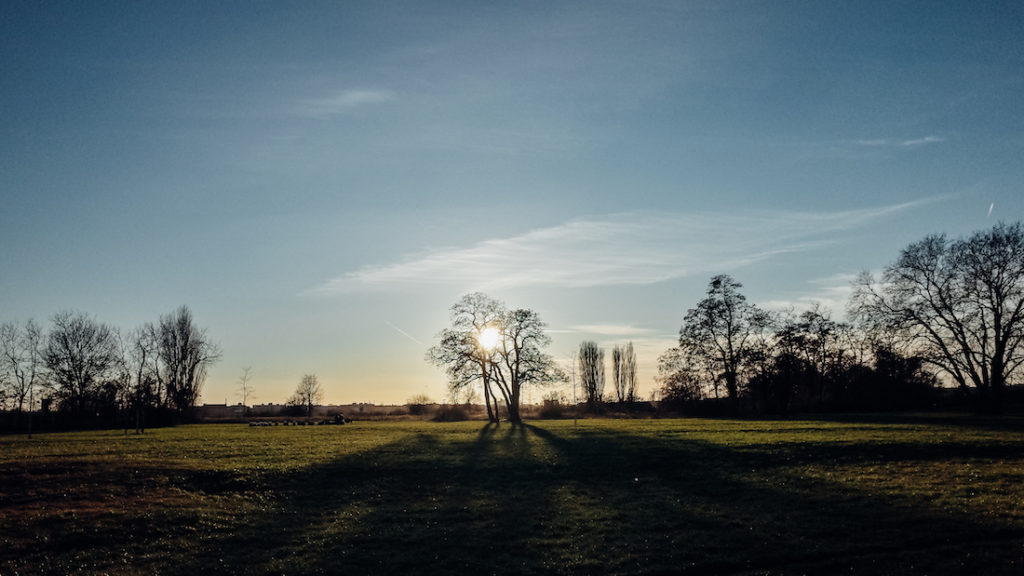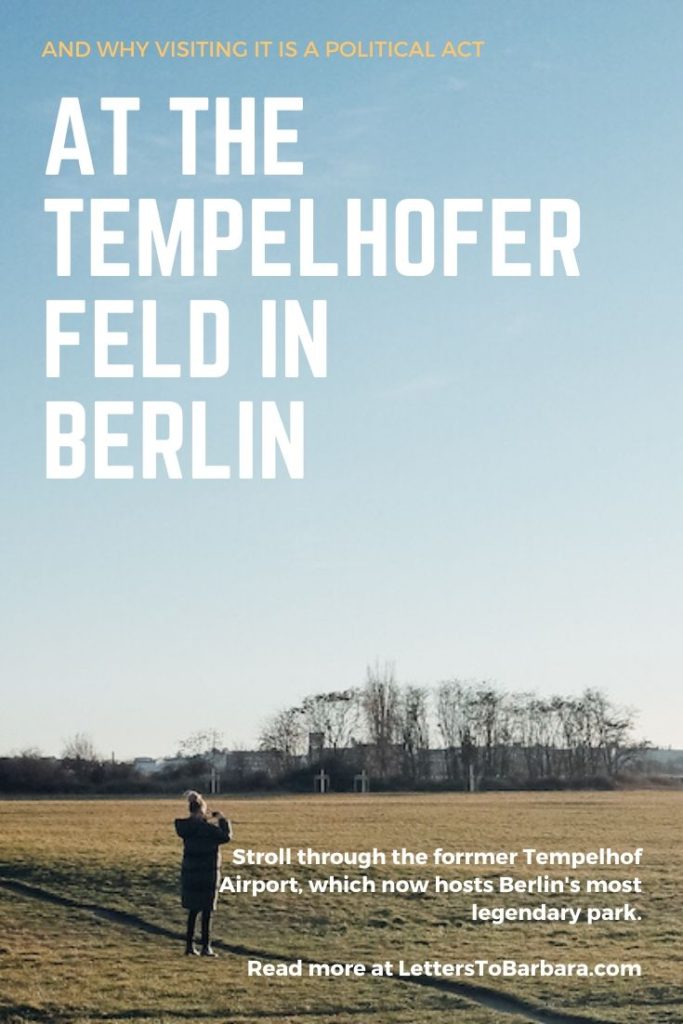I moved to Berlin in January 2010. Back then, the city’s agenda was very different from what it is today. I still remember the talks about the former Tempelhof airport, located in the middle of the city. It was officially shut in 2008, and the Berliners were really looking forward to its future: from then on, it would operate as a park. The so-called Tempelhofer Feld, or Tempelhof Park in English, opened in May 2010.
The anticipation was high: loads of people visited the old airport and strolled around the airstrips. The buildings of the Tempelhof airport remained intact, the signs too. It was as if the planes departed to unknown destinations. There were no passengers anymore at Tempelhof Park; instead, locals and visitors were enjoying the vast Park. Still to this day, the Tempelhofer Feld is the largest inner-city open space in the world.
Of course, wherever the inhabitants find joy, private funds smell blood. The shadow of neoliberalism covers Europe like a medieval veil, and Berlin couldn’t remain unaffected. Berlin was still Europe’s most dynamic capital, which under an economic prism, also translates to most undeveloped. It was a matter of time for a project of exploitation to unfold. And it happened really fast.
In 2011, before and during the local elections, the plan started to circulate. Instead of having a park, the city planners dreamed of approximately 5,000 new houses, commercial areas, and loads of offices, plus a public Library. Wowereit, Berlin’s iconic mayor, also backed the plan for the library. He once stated that Berlin is “poor but sexy” (“arm aber sexy“), but apparently it shouldn’t always remain poor.
Tempelhofer Feld: the referendum of 2014

Most of the locals were furious. Behind the big housing project, Berliners understood exactly what was going on: the city was about to change. The biggest part of the city didn’t buy the “thoughts about the city’s future.” Gentrification started being a hot topic in the city, and building houses for the future inhabitants also meant that the rents would skyrocket all around the city. Soon, the 100% Tempelhofed Feld initiative started to form, and among their first goals was to collect signatures for a referendum.
From mid-2011 to May 2014, the future of the Tempelhofer Feld became a hot topic in the city’s agenda. Most of the media backed, of course, the development project. It was a time that you’d hear things like “Monaco is 200 hectares, Tempelhofer Feld is 300.” On the other hand, no one really bought the sudden State’s sensitivity. The rents have been increasing for years, and offering the most valuable plot to businesses for building new houses didn’t sound convincing.
Despite the intense lobbying and the newspaper articles, the result of the May 2014 referendum was clear. More than 64% of the Berliners voted that the Tempelhofer Feld should stay as it is. “It’s a defeat, and it’s indeed a very clear one,” said Wowereit. The result was satisfying for most of the Berliners. It seemed that the city didn’t totally abolish its revolutionary spirit. For me, as a Berliner by choice and not as a local, this was the most iconic win of the city against the Capital in the second decade of the 21st century.
Why visiting the Tempelhofer Feld is a political act

No one can be 100% satisfied with the things around him. For example, unleashed dogs running crazily give me shivers. But this is a personal annoyance, and it can’t be annualized to social discomfort. Other people might feel uncomfortable with cyclists driving fast on the airstrips, while others might not like the barbecue smell. But among its other virtues, Berlin is a city (or The city) of tolerance, and finding a way to co-exist is rewarding.
After more than ten years in Berlin, I always stroll through the Tempelhofer Feld now and then. I try not to be naive: I know that the State still daydreams of this plot. I’m pretty sure that they are still making plans of how to get rid of the cyclists, the kite-runners, the dog-owners, the rollerbladers, the barbecuers, the families, the hipsters, the pensioners, and the whole ecosystem that frequents the Tempelhof Park. Under their strict economic prism, this is a lost piece of land. They’d rather have the twin brother of Monaco there and not a space to celebrate freedom of choice.
I first visited Berlin back in 2000, and I’m living here since 2010. A walk at Tempelhofer Feld is one of the few things that still justify my decision to be here permanently for over a decade. The gentrification invaded everything and walks hand-in-hand with AirBnB, the rents start being unaffordable, and the Berlinale becomes more expensive every year. I could name several examples regarding the transition of this city.
Services decline, prices rise, and we don’t get anything back. But whenever I walk down the airstrips of Tempelhofer Feld, I remember that referendum. I also remember what it means to resist mass media brainwash and why all these tiny social victories are essential. Being there, among strangers that celebrate freedom, is a political act. Maybe not the deepest one, perhaps not an intentional one either. Nonetheless, it’s proof that one’s presence in a place where History took place it’s a statement.
Sometimes, when I walk through Tempelhofer Feld on a cold winter day, I think of the airplanes that used to fly here. The horizon is clear, and the sun comes straight to my eyes. Two World Wars and a Wall destroyed Berlin, but it’s a couple of decades of neoliberalism that leveled it. I then think of all these lobbyists in their offices. They don’t have faces, and they earn by destroying. May a good old airplane take them away from Berlin.
Info & Photos
For the first-time visitor to Berlin, a stroll through the Tempelhofer Feld is one of the best things to do. You can also rent a bike -or even bring your own and cycle around the former airport. Of course, you can walk everywhere around Tempelhof Park and unwind. During summertime, there are several kiosks selling drinks and food.
Opening hours of the Tempelhofer Feld
You can access Tempelhof Park from sunrise to sunset. There is, of course, no entrance fee. Sometimes, due to festivals taking place in the Park, people will stay there longer. Back in 2013, the famous German band Die Toten Hosen played in front of 50,000 people at Tempelhofer Feld.
How to get to Tempelhof Park
There are currently ten entrances at Tempelhof Park. You can find six of them on the eastern end of the runways at Oderstrasse. Another two entrances are at Berlin-Tempelhof station (s41, S42, S45, S45, and metro-line U6) and at Paradestraße (also U6), at Tempelhofer Damm. Last but not least, there are two more entrances at Columbiadamm. Access by public transport is, therefore, comfortable.
In which district is Tempelhof Park located?
The Tempelhofer Feld actually belongs to two districts: Neukölln and Tempelhof, in former West Berlin.
Who takes care of the Park?
Since September 2015, Grün Berlin maintains the grounds of the Tempelhof Park.
What was the former use of Tempelhofer Feld?

In former times this was one of Berlin’s airports (Tegel and Schönefeld are the other two). The so-called Berlin-Tempelhof Airport operated between 1923 and 2008. Tempelhof Airport went through an extensive reconstruction under the Nazis in the 1930s. Just for the record, its IATA code was THF.
The European refugee crisis of 2015 and the Park
During the European refugee crisis of 2015, the Berlin state government announced that Tempelhof would become an emergency refugee shelter. Most of the buildings of the former airport remain more or less intact. They could host approximately 1,200 people in two former hangars.
Any legendary flights?
Orville Wright flew over Tempelhof in 1909. You can read more about Wright’s flight here.
Are there any Tempelhof airport tours?
There are a couple of tours to the former Tempelhof Airport. You can combine them with a visit to the Tempelhofer Feld, of course. It might sound actually sound like dark tourism, but if you take a tour, you will also get lots of information about its use under the Nazis. After all, this is a remnant of both World War II and the Cold War era. So, the Tempelhof Airports tours are:
- The legend of Tempelhof. A 2-hours tour around the former airport. Available in German and English.
- Tempelhof Airport: Hidden places. Explore bunkers and tunnels in the Tempelhof Airport. Available only in German.
Where to stay close to the Tempelhofer Feld

If you enjoy jogging in the Park or you just want to live next to a historic place, there are several options close to Tempelhof Park. In my opinion, one of the most beautiful areas to stay in general in Berlin is the Schillerkiez. While it’s not directly to the Park, it’s very close to it. You can see your accommodation options on the map below.
Epilogue

Tempelhofer Feld is definitely one of the most iconic places in Berlin. Apart from offering vast green space for the visitors, the Park is also one of the favorite hangouts of the locals. On a sunny summer day, you will find thousands of people spending their free time at the Park. Cycling, walking, rollerblading, are just some of the things that you’ll see around. Currently, the future of the Tempelhofer Feld looks bright. But since no one knows the future agenda of the State, we should enjoy it while it lasts. And resist if times become tougher again.
*Some of the links within the text are affiliate links. It means that if you book something, I might earn a small commission at no additional cost to you.
More about Berlin: The Ultimate Berlinale Guide, A travelogue, The women of Bleibtreustrasse, Berlin Festival of Lights
Or read all my posts about Berlin here
*Get my FREE Travel Writing Course*
Pin it!

Please share, tweet, and pin if you enjoyed reading about the Tempelhofer Feld in Berlin. Your support keeps this website running and all the info up-to-date. 🙂
Last Updated on January 16, 2021 by George Pavlopoulos
